Huslia’s wood biomass system saves money, creates jobs, and keeps energy dollars in the community.
Office of Indian Energy Policy and Programs
March 31, 2020Huslia’s Wood Biomass System Saves Money, Creates Jobs, Keeps Energy Dollars in the Community
Something’s happening in Huslia. In a time when the populations of other Native villages are dwindling, this mushing mecca nestled deep in Alaska’s Interior is fueling its growing local economy.
Known as Alaska’s dog mushing capital, the remote Native village of Huslia has raised up many mushing legends, and it’s still home to three dog kennels. After a decade-long baby boom, more than a third of its 300+ residents are children. And its school has just completed a $17 million upgrade, complete with a boiler tied in to a district heating system that includes the clinic and water plant.
Huslia's newly installed biomass system is fed by locally harvested cordwood, saving the community money, reducing its reliance on imported diesel, and fueling the local economy.
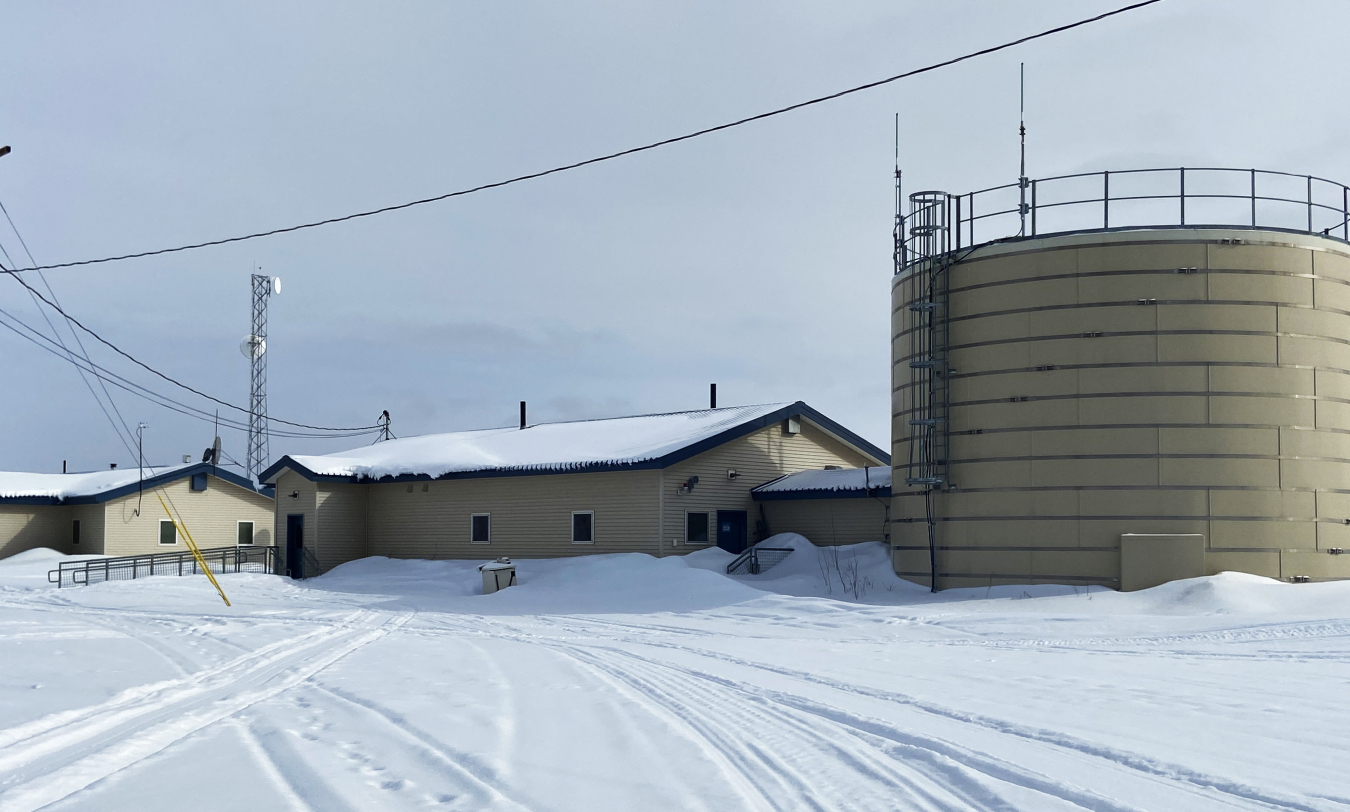
Homegrown heat—Huslia’s new district heating system uses cordwood, an abundant energy resource that’s harvested locally. Photo from Leah David, Huslia Tribal Finance Officer
Like the sled dogs, the wood biomass system is a nod to the traditional ways—and it’s fueling Huslia’s push toward a more secure, sustainable future. This biomass heating project will save Huslia an estimated $57,000 in annual energy costs, provide winter work for up to a dozen residents, and inject more than $40,000 into the local economy each year.
Cofunded by a $361,731 U.S. Department of Energy (DOE) Office of Indian Energy grant awarded in 2017, the biomass system supports the community’s near-term goal to displace 25% of diesel used for heating with renewable energy by 2025. It also advances the Tribal Council’s strategic vision to ensure the community’s survival and preserve its traditional way of life while creating a self-sustaining economy.
The $723,464 energy infrastructure investment will save the community an estimated $1.5 million in energy costs by 2045.
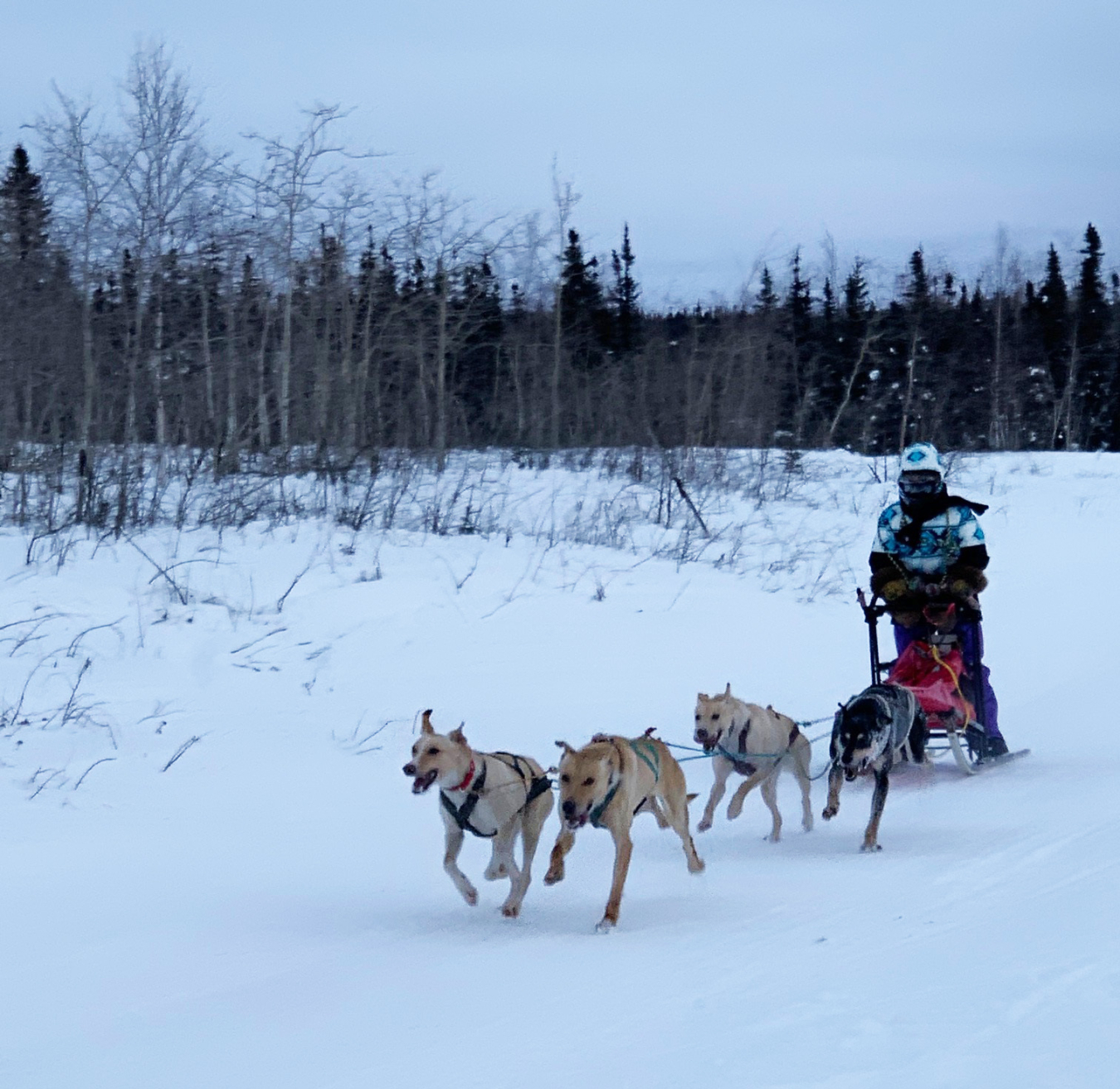
The Huslia hustle—Multiple mushing champions hail from Huslia (including the late mushing legend George Attla, a.k.a. Huslia Hustler), where sprint dogsled racing reigns. Photo from Leah David, Huslia Tribal Finance Officer
Remote Villages Find Relief Using Reliable Local Resources
Huslia sits on the bank of the Koyukuk River about 290 air miles northwest of Fairbanks in the Koyukuk National Wildlife Refuge. It is not connected to the Alaska road system. In winter, the only way in or out is by plane, snow machine, or dog sled. Securing fuel oil needed to heat homes and buildings takes planning. It’s also costly.
“We would have to order fuel from the barge, and that comes only twice a year,” said Tribal Finance Officer Leah David, a native of Huslia. “And that’s just money leaving our community, paying them … to fill up our fuel.”
Huslia is not alone; most villages in rural Alaska face energy security challenges and crushing energy costs. Across the state, many are adopting sustainable solutions that rely on indigenous renewable resources, including solar and wind.
In Alaska’s Interior, wind is not abundant—but wood is. For thousands of years, communities in the region have harvested wood sustainably and used it to heat their homes. In recent years, many of Huslia’s neighboring villages have reembraced biomass as a cleaner, cheaper, locally available alternative to diesel fuel.
“They’re kind of surrounded,” said Dave Messier, rural energy coordinator for the Tanana Chiefs Conference (TCC), an Alaska Native nonprofit that serves 42 federally recognized tribes in the Interior. “A number of villages up and down the river, where folks have relatives, are engaged in biomass projects of various sizes. And word travels on the river.”
A number of villages up and down the river, where folks have relatives, are engaged in biomass projects of various sizes. And word travels on the river.

Dropping diesel—Remote river villages like Huslia that have long relied on diesel delivered by barge are turning back to biomass to reduce reliance on high-priced diesel. Photo from Leah David, Huslia Tribal Finance Officer
Messier recalls that after Chief Carl Burgett took office in 2016, he sought to follow suit and solicited TCC’s help bringing biomass energy to Huslia. “The new chief came in and said, ‘We want some economic development, and we want to focus on energy.’ This project is a good nexus between the two.”
The first hurdle Huslia faced was funding.
With Funding Partners and a Big Buyer, Huslia Seals the Deal
To secure a DOE grant, a proposed project has to pencil out. And in rural Alaska, with small populations and steep freight and construction costs, that’s easier said than done.
“It amazes me sometimes how much these buildings and systems cost to put together,” said Messier. “It just makes it really challenging for a [small] community like Huslia to tackle something like this alone. The cost share from the Office of Indian Energy is really instrumental in making these projects succeed.”
The cost share from the Office of Indian Energy is really instrumental in making these projects succeed.
For such projects to demonstrate economic viability, attracting the largest customer is often key. “The largest customer in all of our communities is the school,” said Messier. “Historically, however, schools have been hesitant to sign heat sales agreements.”
But Huslia had a few things working in its favor.
First, it had a community member on the Yukon-Koyukuk school board who actively championed the project. It also had a partner in TCC. The nonprofit’s deep regional experience managing similar tribal projects was instrumental in helping Huslia navigate project development logistics and secure the cost share needed to meet DOE’s cost-share requirements.
The Alaska Native Tribal Health Consortium had already done a feasibility study on biomass heating for Huslia’s water plant and clinic with funding from the Alaska Renewable Energy Fund. They had enough money left over to cover the design of the building needed to house the system.
“Fortuitously, the school was undergoing an upgrade,” said Messier. “So we were able to hit them at the right point in their design process and get them to allow us to design a tie-in to the mechanical system.”
Each of these positives added up, culminating in a groundbreaking heat sales agreement between the school district and the community. “To my knowledge, it’s the first tribally owned biomass project in the Interior that is selling heat to the school,” said Messier.
To my knowledge, it’s the first tribally owned biomass project in the Interior that is selling heat to the school.
Locals Form Supply Chain as Market Heats Up
Once the biomass system was completed in September 2019, the next challenge was securing local wood suppliers to keep it up and running.
“It’s one thing to call up a vendor and go drop fuel in the tank; it’s another for the Tribe to take on the role of biomass vendor. You’ve got to arrange suppliers to go out and cut wood, and you’ve got to time that with drying the wood to burn in the boilers,” Messier said. “It’s just a totally different supply chain.”
So far, the project is providing welcome work to a half dozen residents during a season when work can be scarce. “A lot of them have snow machines and sleds, and they can go out and get wood and sell it to us,” said [Leah] David, who, along with managing the DOE grant, is also responsible for paying local vendors.
She expects more suppliers to join their ranks this spring as word of the demand for wood gets around. “Sometimes it’s their favorite thing to do—go out in the woods and work and just get out of the house, she said. “It’s a great way for our younger families to have some income during the winter months.”
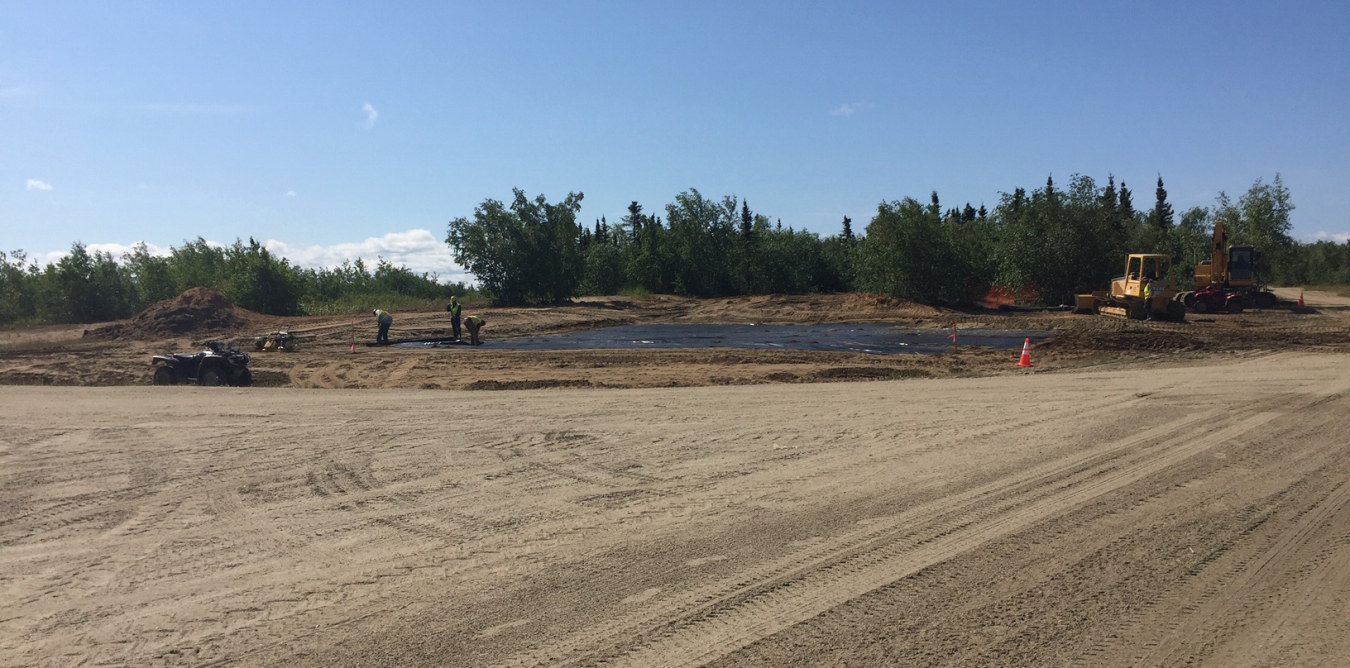
Local labor paves the way for future projects—The contractor who laid the concrete pad and built the enclosure for Huslia’s biomass system hails from the nearby village of Galena.
Messier is encouraged by the growing ranks of regional residents getting involved in energy projects. “Local labor is something we [TCC] try to stress with all of our projects,” he said, noting that the contractor who built the biomass enclosure and laid the concrete pad was from the nearby village of Galena.
“It empowers folks on another level,” said Messier. “And it enables us to do more of these projects in the future because we’ve got more of a workforce trained up. Hopefully with the next project, we’ll be able to borrow people from Huslia to work in other communities as we incorporate biomass into the heating systems [in other villages].”
Sometimes it’s their favorite thing to do—go out in the woods and work and just get out of the house. It’s a great way for our younger families to have some income during the winter months.
It Takes a Village
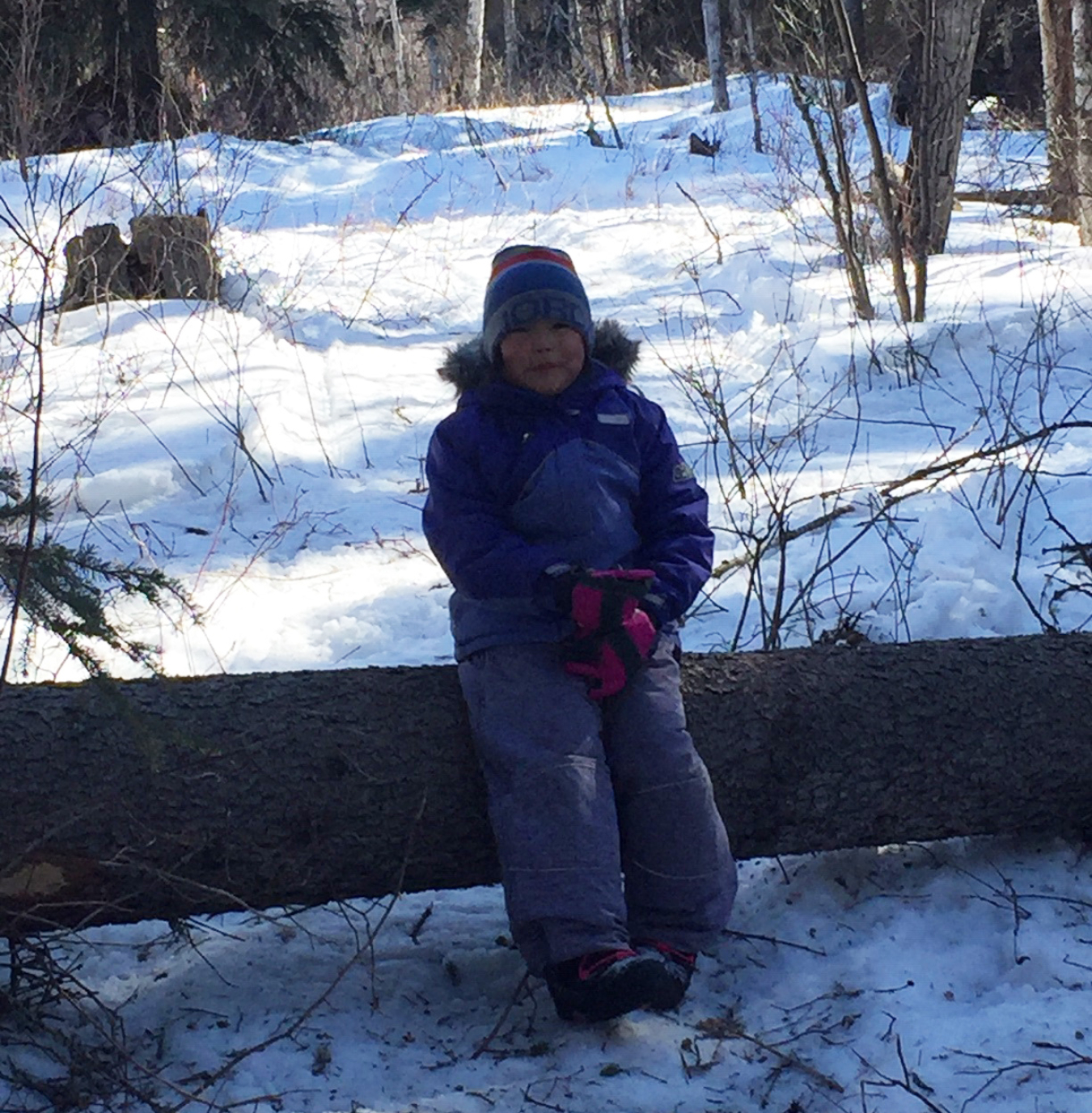
The Giving Tree—Sustainably harvested wood helps Huslia preserve its way of life for future generations. Photo courtesy of Leah David, Huslia Tribal Finance Officer
Given the many hurdles involved in completing energy projects in rural Alaska, Messier marvels at the efficiency with which Huslia executed its biomass project. Two years after the Tribal Council received the DOE grant, the biomass system was online.
“One thing that can stymie projects is things get siloed, and when you’re a community of 300 or so on the banks of the Koyukuk, that’s not a productive approach,” he said. “You’ve really got to work together. The major entities in Huslia really came together to make this one a success.”
Many stars aligned to guide Huslia’s successful sprint to this milestone on the path toward its community vision. But the key was teamwork—something that has served to sustain the community’s people for generations, propel its legendary dog-mushing champions, and uphold its rich cultural traditions.
Teamwork is an asset that’s embodied in the newly renovated Jimmy Huntington school, where locally harvested wood provides heat, and a dog-mushing curriculum connects Huslia’s youth to their heritage. It’s also at the heart of what led Leah David back to Huslia to settle and raise her children.
“It’s just a great place to have your kids grow up because it’s really a community-based village. Everyone comes together to help out,” she said. “And now that we have the wood boilers, we save money there, and the money is going to stay in the community and help our people more.”
Learn more about the Huslia Tribal Council project and how the DOE Office of Indian Energy supports Alaska Native Villages.
Karen Petersen
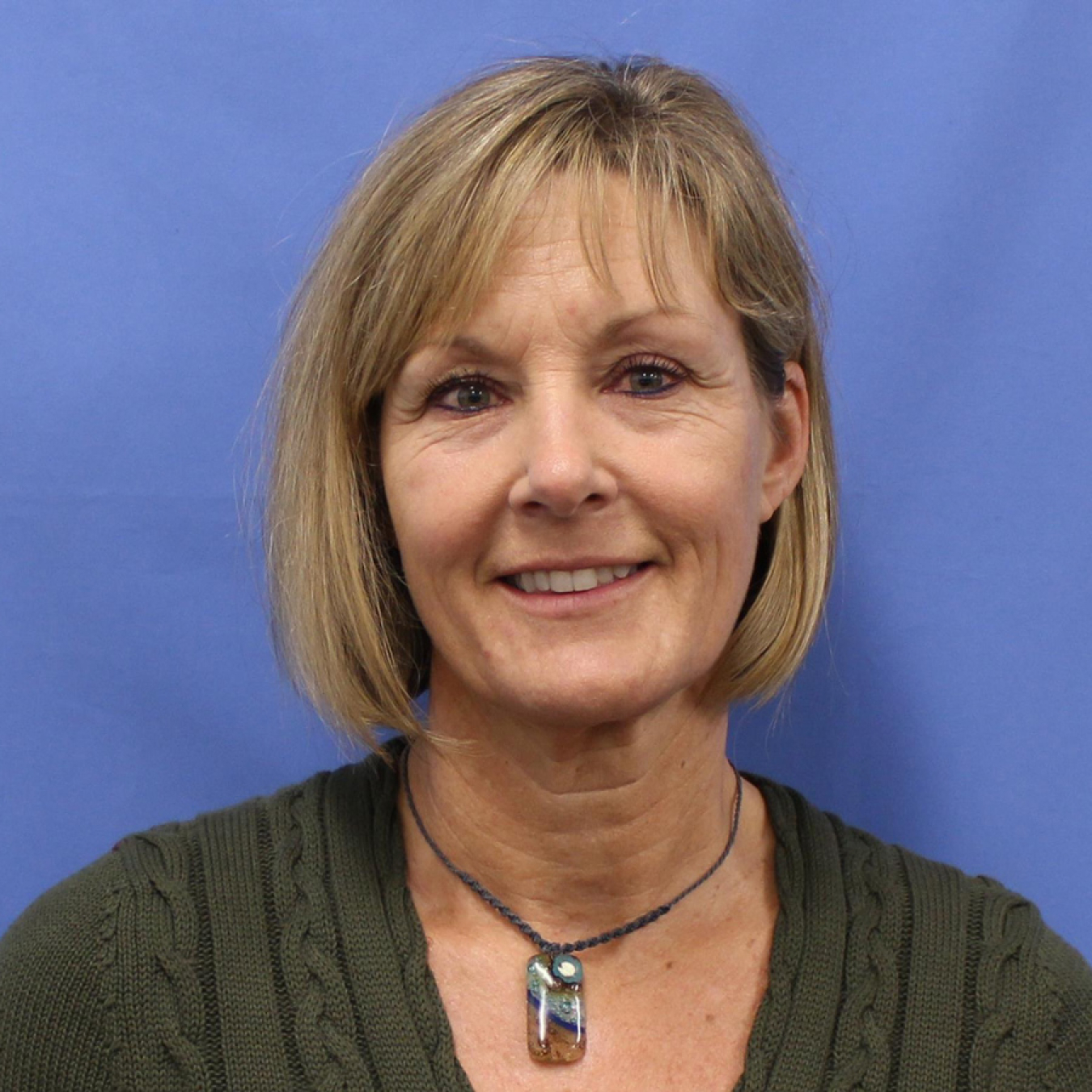
Karen Petersen is a communications strategist in the National Renewable Energy Laboratory’s Communications & Public Affairs Office. With more than 25 years of private-sector experience in publishing and marketing, Ms. Petersen specializes in writing, editing, strategic communications planning, and brand development. In addition to serving as the Tribal Energy Program communications lead from 2010 through 2015, she actively supported the development of the DOE Office of Indian Energy’s communications strategy, brand identity, and outreach materials. Ms. Petersen also served as the communications lead for DOE-led clean energy initiatives in Hawaii and the U.S. Virgin Islands.

